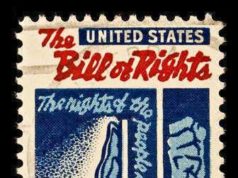Table of Contents

What Procedures Congress Follows
The United States Congress is the lawmaking branch of the federal government. It is made up of two chambers – the Senate and the House of Representatives – each with their own set of rules and procedures. Here is a breakdown of the procedures that Congress follows in order to conduct legislative business and fulfill its responsibilities to the American people.
Introducing and Passing Bills
Any member of Congress can introduce a bill, which is a proposed law. After a bill is introduced, it is assigned a number, referred to a committee, and, if approved, debated on the floor of the House or Senate. Once a bill is passed by one chamber, it is sent to the other chamber for approval. If both chambers pass the same version of the bill, it is sent to the president for signature or veto. If the president vetoes the bill, Congress can override the veto with a two-thirds vote in both chambers.
Committees
Committees are a crucial part of the legislative process in Congress. Each chamber has a number of committees, which are responsible for reviewing legislation and conducting investigations. In both the House and the Senate, committees are broken down into subcommittees, each with their own specific area of focus.
Debating and Voting
Once a bill reaches the floor of either chamber, it is debated and voted on by all members. During debate, members can speak in favor of or against the bill, offer amendments, and propose alternative legislation. After debate, the bill is put to a vote, and if a majority of members approve the bill, it is passed and sent to the other chamber.
Conference Committees
If the House and Senate pass different versions of the same bill, a conference committee is formed to reconcile the differences. The conference committee is made up of members from both chambers, who work together to create a final version of the bill that both chambers can agree on. Once the conference committee reaches a compromise, the bill is sent back to each chamber for a final vote.
Executive Action
After a bill is passed by Congress, it goes to the president for signature or veto. If the president signs the bill, it becomes law. If the president vetoes the bill, Congress can override the veto with a two-thirds vote in both chambers. If the president takes no action for 10 days while Congress is in session, the bill automatically becomes law. If the president takes no action for 10 days while Congress is not in session, the bill is vetoed by inaction, and must be reintroduced in the next session of Congress.
Conclusion
Congress follows a complex set of procedures in order to conduct legislative business and pass laws. From introducing bills to voting and reconciling differences between chambers, the legislative process is designed to ensure that all voices are heard and that the best possible legislation is passed for the American people. The procedures that Congress follows are essential to the functioning of our democracy and the balance of power between the branches of government.
Under the United States Constitution, each chamber of Congress is to provide for its own regulations and rules regarding the proceedings that are to be conducted in each House.
Therefore, the House of Representatives and theSenate
engage in the following:
● The offering of the prayer by the Chaplain of the House
● The reading and approval of the legislative journal
● The Pledge of Allegiance
● Corrections to public bills
● Business that is pending on the Speaker of the House’s table
● Unfinished or pending business
● Consideration of any new bills that is to be introduced by the committees of the House of Representatives
● State of the Union
● Orders of the Day
In regards to the passing of bills, there are certain regulations that may have to be considered that may differ from the original list of priorities. It is important to note that any Congressman of the House of Representatives can introduce a bill at any time that the House is in session. The Congressman can place a copy of the bill in the “hopper” that is placed next to the Clerk of the House’s desk.
This Congressman must provide for a signed copy of the bill, which may be co-sponsored by other Congressmen. The bill is then assigned a legislative number by the Clerk and added to the journal as well as the Congressional Record. The bill will then referred to the
appropriate committee that has jurisdiction over that particular matter or issue.
























